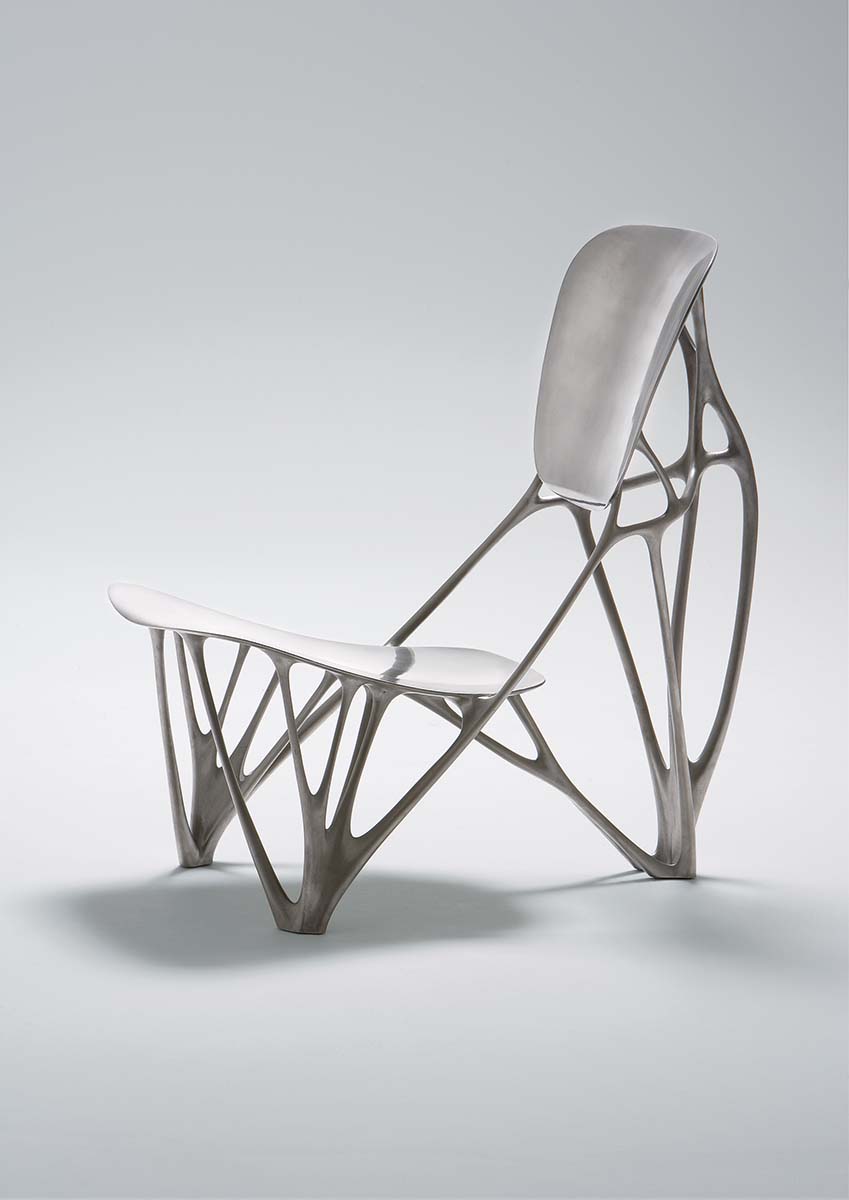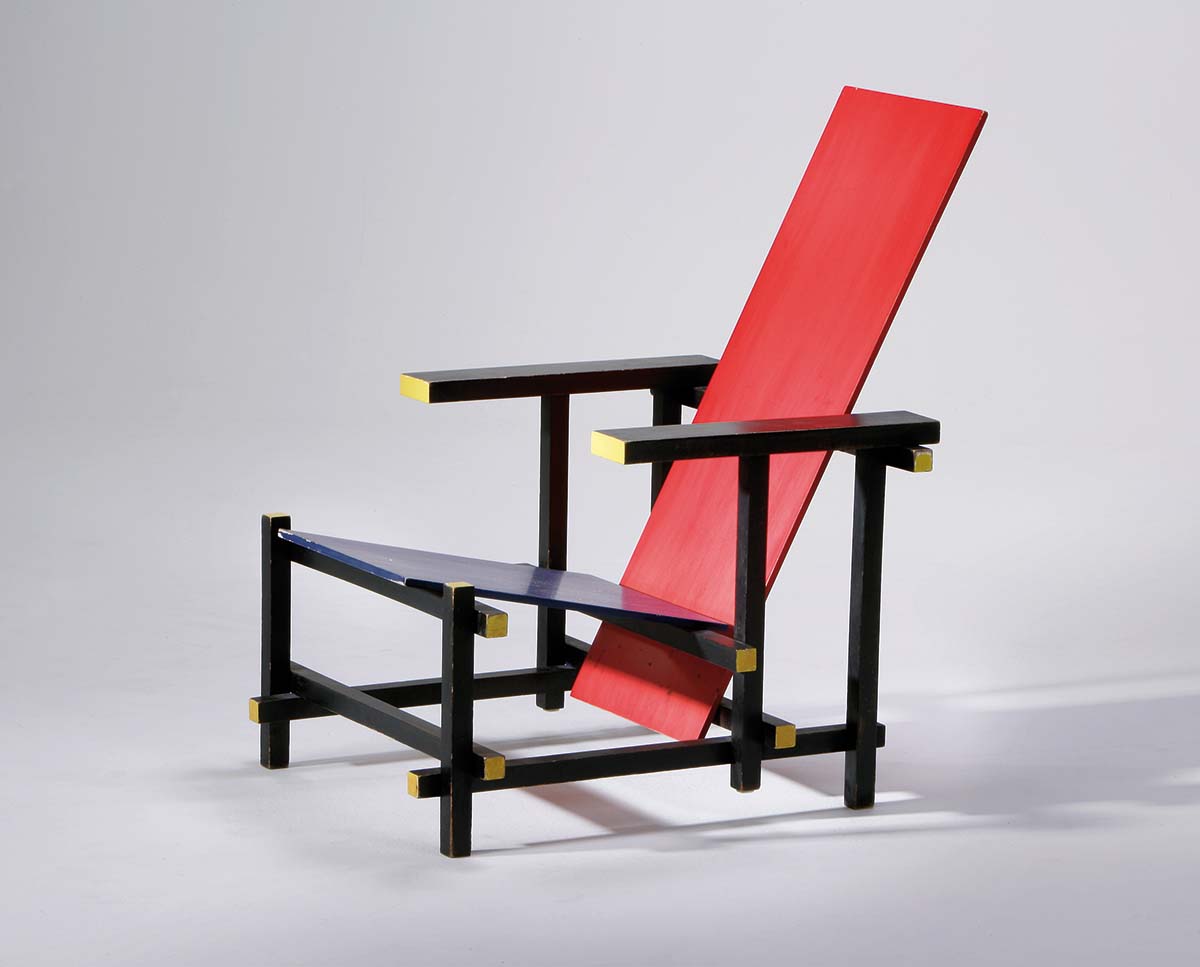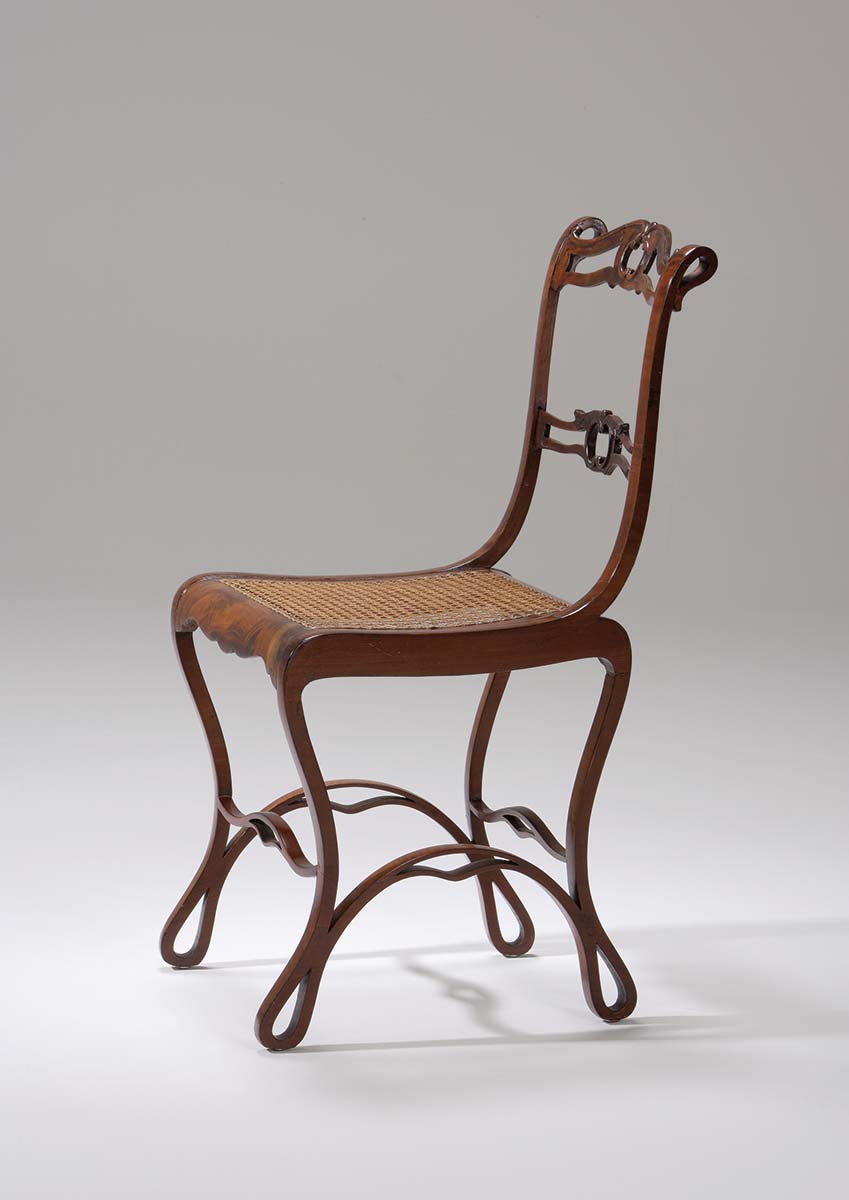Leave us your email and download the terms and conditions to participate.
Exposiciones
Sillas: Iconos del diseño moderno
Chairs: Icons of Modern Design
The Alexander von Vegesack collection
9 feb. — 31 mar. 2024
Fernán Gómez. Centro Cultural de la Villa
— Madrid
Inauguración
08/02/2024
Comisariado por
Guillermo Gil Fernández y Pablo Sevilla (Domaine de Boisbuchet)
Sede
Fernán Gómez. Centro Cultural de la Villa
Plaza de Colón, 4, 28001 Madrid
Entrada
Gratuita hasta completar aforo
Diseño de exposición:
Pablo Sevilla
Asistente curatorial:
Bernardo Sandoval
Colección Alexander von Vegesack – Domaine de Boisbuchet
Exposición accesible para personas con discapacidad visual
Esp
Fuente de apoyo y reposo, símbolo de estatus o lienzo donde expresar la creatividad, la silla ha sido a lo largo de la historia testigo silencioso de la evolución de nuestras sociedades. La exposición Sillas: Iconos del diseño moderno. Colección Alexander von Vegesack es un homenaje al ingenio humano y a la expresión artística, que recorre la metamorfosis de las sillas desde sus orígenes humildes y artesanales hasta los diseños icónicos que hoy en día reflejan los cambios culturales, sociales y tecnológicos de nuestro mundo.
Las sillas, ligadas íntimamente al cuerpo humano, del que son siempre contraparte, son objetos complejos que trascienden su carácter funcional. Son artefactos dinámicos y cambiantes, que reflejan en cada periodo histórico las innovaciones materiales, las transformaciones de la industria, la evolución de las normas sociales, el gusto estético o el impacto ecológico de nuestro estilo de vida. Las sillas no sólo reflejan las necesidades prácticas y las posibilidades técnicas y materiales de cada tiempo y lugar, sino que también ejercen un papel importante como símbolos, como iconos capaces de encapsular los aspectos que definen la esencia de cada época.
La exposición muestra más de 70 piezas cuidadosamente seleccionadas de la extraordinaria colección de Alexander von Vegesack. En ella se muestra el trabajo de algunas de las figuras más relevantes de los campos del diseño y la arquitectura de los siglos XIX y XX, como Michael Thonet, Charles Rennie Mackintosh, Mies van der Rohe, Marcel Breuer, Charlotte Perriand, Le Corbusier, Alvar y Aino Aalto, Charles y Ray Eames, Gaetano Pesce, Verner Panton, Frank Gehry o Philippe Stark, entre muchos otros.
Presenta también una amplia selección de más de 80 catálogos, libros y otras publicaciones originales, que además de aportar nuevas claves que ayudan a comprender el contexto en el que las obras expuestas fueron concebidas, permiten una exploración exhaustiva de la profunda influencia que el trabajo de todos estos creadores ha tenido en dar forma al mundo que conocemos.
Nuestra comprensión del diseño está muy influenciada por la manera en que este se presenta, y Alexander von Vegesack es uno de los pioneros de esta mediación. Coleccionista y organizador de exposiciones, concibió y cofundó en Alemania en 1989 el Vitra Design Museum, que dirigió durante más de 20 años hasta convertirse en una institución mundialmente respetada en este ámbito. Al mismo tiempo, fundó en Francia Domaine de Boisbuchet, donde muchos de los diseñadores y arquitectos más reconocidos de la actualidad dirigen desde entonces talleres prácticos. Su visión de los objetos y de su contexto, así como sus continuas preguntas sobre qué es el diseño, han ayudado a configurar desde hace tiempo el propio diseño como disciplina. En ningún lugar es su punto de vista más evidente que en su colección única de objetos y documentos, que ha construido a lo largo de su vida.
Eng
Whether for support and rest or as a status symbol or a canvas on which to express creativity, the chair over history has been a silent witness to society’s evolution. The exhibition Chairs: Icons of Modern Design. The Alexander von Vegesack collection is a tribute to human ingenuity and artistic expression, exploring the metamorphosis of chairs from their humble, handcrafted beginnings to the iconic designs which today reflect cultural, social and technological changes in our world.
Chairs, closely associated with the human body, of which they are always a counterpart, are complex objects that transcend their functional role. They are dynamic and changing artefacts reflecting the material innovations of each age along with transformations in industry, trends in social norms, changing aesthetic tastes or the impact of our lifestyle on the environment. Chairs not only reflect the practical needs and technical and material possibilities of any one time and place but also have a major role as symbols, as icons able to encapsulate the aspects defining the essence of a period.
The exhibition contains over 70 carefully selected pieces from the extraordinary collection of Alexander von Vegesack. It shows work by some of the most significant figures in the fields of design and architecture over the 19th and 20th centuries, such as Michael Thonet, Charles Rennie Mackintosh, Mies van der Rohe, Marcel Breuer, Charlotte Perriand, Le Corbusier, Alvar and Aino Aalto, Charles and Ray Eames, Gaetano Pesce, Verner Panton, Frank Gehry or Philippe Stark, among many others.
The exhibition also includes a selection of over 80 catalogues, books and other original documents. They not only provide new pointers for understanding the context in which the selected artefacts were conceived but also permit a thorough exploration of the great influence that the work of their creators has had in giving form to the environment of our time.
Our understanding of design is largely shaped by its presentation, and Alexander von Vegesack has been a pioneer of this mediation. This collector and exhibition organiser conceived and co-founded the Vitra Design Museum in Germany in 1989 and led it for over 20 years, turning it into a globally respected institution in the field. At the same time he created Domaine de Boisbuchet in France, where many of today’s most notable designers and architects have been leading hands-on workshops ever since. His view of objects and their context and his questions about what design is have over the years shaped design itself as a discipline. Nowhere, however, is his perspective more evident than in his own unique collection of objects and documents, amassed throughout his life.





